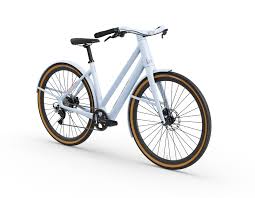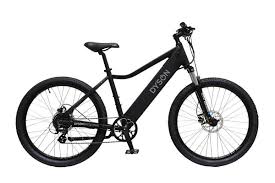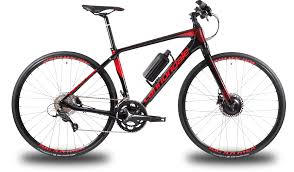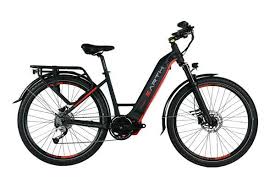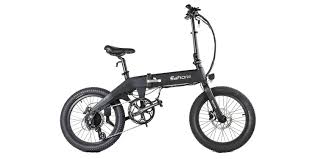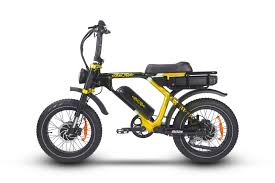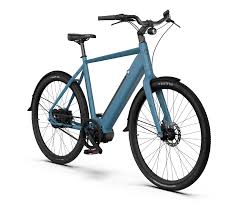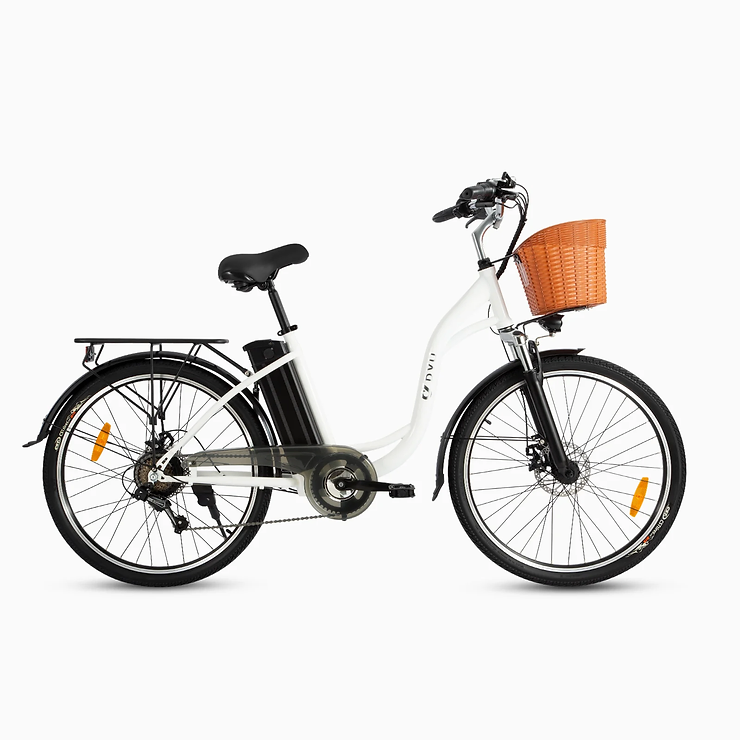
Hey there! Thinking about joining the e-bike revolution? Whether you’re looking to ditch the car for a greener commute, enjoy leisurely rides around the city, or tackle some rugged trails, an electric bike can be a game-changer. But with so many options out there, it’s easy to feel overwhelmed. No worries! Here’s a handy guide to help you navigate the world of e-bikes and find the perfect ride for your needs.
Understanding the Types of E-Bikes
When it comes to buying an e-bike, understanding the different types available is crucial to finding one that best suits your needs. Here’s a deeper dive into the various types of e-bikes:
- City/Urban E-Bikes:
- Purpose: Designed primarily for commuting and navigating urban environments.
- Features: These bikes typically offer a comfortable upright riding position, integrated lights for visibility, fenders to keep you clean, and racks or baskets for carrying items. Some may include minimal suspension to handle potholes and rough roads.
- Ideal For: Daily commutes, errands around town, and short trips.
- Mountain E-Bikes (e-MTBs):
- Purpose: Built for off-road trails and rugged terrains.
- Features: Robust frames, powerful mid-drive motors for better control and balance, full or front suspension to absorb shocks, and knobby tires for excellent traction. They also have strong brakes for safe downhill riding.
- Ideal For: Off-road enthusiasts, trail riders, and those who enjoy adventure cycling.
- Hybrid E-Bikes:
- Purpose: Versatile bikes that can handle both urban streets and light off-road paths.
- Features: A mix of city and mountain bike characteristics, such as medium-width tires, a comfortable riding position, and sometimes front suspension. They are designed for flexibility and adaptability.
- Ideal For: Riders who want a single bike for multiple uses, including commuting and recreational riding.
- Folding E-Bikes:
- Purpose: Designed for easy storage and portability.
- Features: Compact frame that folds down to a smaller size, making it convenient to carry and store in small spaces like apartments or offices. They typically have smaller wheels and may be lighter than other e-bikes.
- Ideal For: Commuters who use public transport, urban dwellers with limited storage space, and travelers.
- Cargo E-Bikes:
- Purpose: Built to carry heavy loads, groceries, or even children.
- Features: Sturdy frames with extended rear racks or front cargo areas, powerful motors to handle the extra weight, and enhanced stability. Some models have features like child seats or large panniers.
- Ideal For: Families, delivery services, and anyone needing to transport large items by bike.
- Road E-Bikes:
- Purpose: Designed for speed and long-distance rides on paved roads.
- Features: Lightweight frames, drop handlebars for an aerodynamic position, narrow high-pressure tires for reduced rolling resistance, and efficient motors that assist at higher speeds.
- Ideal For: Long-distance cyclists, fitness enthusiasts, and those who enjoy road biking.
- Fat Tire E-Bikes:
- Purpose: Suitable for riding on soft or unstable surfaces like sand, snow, and rough terrain.
- Features: Extra-wide tires that provide excellent traction and stability, strong frames, and often come with suspension for a smoother ride.
- Ideal For: Riders looking to explore beaches, snowy areas, or off-the-beaten-path locations.
- Cruiser E-Bikes:
- Purpose: Designed for relaxed, leisurely rides.
- Features: Upright riding position, wide handlebars, large comfortable seats, and often stylish retro designs. They prioritize comfort and ease of use over speed.
- Ideal For: Casual riders, beachgoers, and those looking for a comfortable, stylish way to get around.
- Gravel E-Bikes:
- Purpose: Versatile bikes for mixed terrains including gravel roads and light trails.
- Features: Sturdy frames, wider tires than road bikes but narrower than mountain bikes, and drop handlebars. They are built to handle a variety of surfaces and conditions.
- Ideal For: Adventurous riders who travel on a mix of paved and unpaved roads.
- Utility E-Bikes:
- Purpose: Multi-purpose bikes designed for various utilitarian needs.
- Features: Can include elements of cargo, city, or hybrid bikes, often with racks, baskets, and other practical features.
- Ideal For: Daily tasks, running errands, and general use.
By understanding the different types of e-bikes, you can better match the bike to your riding needs and preferences, ensuring you get the most out of your e-bike experience.
Consider the Motor Type
Choosing the right motor type is a key decision when buying an e-bike, as it significantly affects the bike’s performance, handling, and overall riding experience. Here’s a breakdown to help you understand the different motor types available and how to choose the best one for your needs:
Hub Motors
Location: Mounted in the center of either the front or rear wheel.
Types:
- Front Hub Motors: Less common, provide a pulling sensation.
- Rear Hub Motors: More common, offer a pushing sensation and better traction, especially for hill climbing.
Advantages:
- Cost-Effective: Generally less expensive than mid-drive motors.
- Simplicity: Easy to install and maintain, with fewer moving parts.
- Quiet Operation: Typically quieter than mid-drive motors.
- Less Strain on Drivetrain: Since the motor works independently of the bike’s gears, it doesn’t put extra wear on the chain and gears.
Disadvantages:
- Weight Distribution: The motor’s weight is either in the front or rear wheel, which can affect balance and handling, especially in the case of rear hub motors.
- Efficiency: Less efficient on steep hills compared to mid-drive motors.
- Limited Gear Integration: Can’t take advantage of the bike’s gears to optimize motor efficiency.
Ideal For:
- Urban commuting on relatively flat terrain.
- Riders looking for a budget-friendly option with straightforward maintenance.
Mid-Drive Motors
Location: Positioned at the bike’s bottom bracket (pedal area), directly driving the bike’s cranks.
Advantages:
- Better Balance: Central placement provides a more balanced and stable ride.
- Efficiency: Can use the bike’s gears to optimize performance, making them more efficient on hills and variable terrain.
- Torque: Generally offer higher torque, which is beneficial for steep climbs and carrying heavy loads.
- Natural Feel: Provides a more natural pedaling feel as the power is applied directly to the chain and gears.
Disadvantages:
- Cost: Typically more expensive than hub motors.
- Maintenance: More complex and can be harder to repair. Increased wear on the bike’s drivetrain components like the chain and gears.
- Noise: Can be noisier than hub motors.
Ideal For:
- Hilly or variable terrain where efficiency and torque are crucial.
- Riders who need a balanced bike with high performance and natural riding feel.
Comparing Both Motor Types
- Performance and Efficiency:
- Mid-Drive Motors: Superior for performance and efficiency, especially on varied terrain.
- Hub Motors: Sufficient for flat terrain and casual commuting.
- Weight Distribution:
- Mid-Drive Motors: Centralized weight distribution enhances balance and handling.
- Hub Motors: Can create uneven weight distribution, particularly with rear hub motors.
- Maintenance and Durability:
- Mid-Drive Motors: Require more maintenance due to the increased wear on the bike’s drivetrain.
- Hub Motors: Generally require less maintenance as they operate independently of the bike’s chain and gears.
- Cost:
- Mid-Drive Motors: Higher upfront cost but may offer better long-term performance.
- Hub Motors: More budget-friendly with lower initial investment.
Making Your Choice
- Consider Your Terrain: For flat city rides, hub motors are cost-effective and sufficient. For hilly or varied terrain, mid-drive motors are more efficient and powerful.
- Think About Maintenance: If you prefer lower maintenance, hub motors are simpler. If performance is a priority and you don’t mind occasional maintenance, mid-drive motors are the way to go.
- Balance and Handling: Mid-drive motors offer better balance and a more natural riding experience, which can be crucial for off-road or long-distance rides.
Understanding these differences can help you make an informed decision and choose the e-bike that best fits your riding style and needs. Happy e-biking!
Check the Battery Life
When buying an e-bike, understanding the battery life is crucial since it directly affects your riding range, convenience, and overall experience. Here’s a comprehensive guide on what you need to know about e-bike batteries:
Key Factors to Consider
- Battery Capacity:
- Measured in Watt-Hours (Wh): The higher the Wh, the more energy the battery stores, translating to a longer range.
- Common Capacities: E-bike batteries typically range from 300Wh to 700Wh or more.
- Calculation Example: A 500Wh battery will provide more range than a 300Wh battery, assuming similar riding conditions.
- Range Per Charge:
- Typical Range: Most e-bikes offer a range between 30 to 120 km per charge, depending on factors such as terrain, rider weight, and assistance level.
- Influencing Factors: Hilly terrain, high assistance levels, and heavy loads can decrease the range, while flat terrain and lower assistance levels can extend it.
- Charging Time:
- Standard Charging: Typically, it takes 3 to 6 hours to fully charge an e-bike battery.
- Fast Charging: Some models offer fast charging options, reducing the charging time significantly.
- Convenience: Consider your daily schedule and how often you can charge the battery to ensure it fits your lifestyle.
- Battery Type:
- Lithium-Ion (Li-ion): The most common type used in e-bikes due to its high energy density, long life, and relatively light weight.
- Maintenance: Li-ion batteries require minimal maintenance but should be stored in a cool, dry place and not be fully discharged frequently.
- Removability:
- Integrated vs. Removable: Removable batteries offer the convenience of charging separately from the bike, which can be handy if you don’t have power access in your storage area.
- Security: Removable batteries can be taken off the bike to prevent theft.
- Battery Lifespan:
- Charge Cycles: A typical e-bike battery can last between 500 to 1,000 full charge cycles. A cycle is one complete charge from 0% to 100%.
- Longevity: Proper care, such as avoiding extreme temperatures and not overcharging, can extend the battery’s lifespan.
- Replacement Cost:
- Cost Consideration: E-bike batteries can be expensive to replace, often ranging from Rs. 10,000 to Rs. 30,000 or more, depending on the capacity and brand.
- Warranty: Check if the e-bike comes with a battery warranty and understand the terms.
- Power Management Features:
- Display and Monitoring: Many e-bikes have a digital display that shows battery level, range estimation, and power usage. Some advanced models connect to apps for more detailed monitoring.
- Energy Regeneration: Some e-bikes offer regenerative braking, which can extend the range by converting braking energy back into battery power.
Practical Tips
- Match Your Needs: Choose a battery capacity that matches your typical ride distance. If you usually ride short distances, a lower capacity might suffice. For longer commutes or tours, opt for a higher capacity battery.
- Plan for Charging: Ensure you have access to charging points, whether at home, work, or other frequent destinations.
- Monitor Usage: Keep an eye on your battery’s performance and range estimates to avoid getting stranded without power.
Understanding these aspects of e-bike batteries will help you make an informed decision, ensuring you choose a bike that meets your range and performance needs while fitting seamlessly into your daily routine.
Evaluate the Charging Time
Understanding the charging time of an e-bike battery is essential, as it impacts how you integrate the e-bike into your daily routine. Here’s a detailed look at what to consider regarding e-bike battery charging times:
Key Factors Affecting Charging Time
- Battery Capacity:
- Measured in Watt-Hours (Wh): Larger capacity batteries take longer to charge.
- Example: A 500Wh battery will generally take longer to charge than a 300Wh battery.
- Charger Specifications:
- Ampere Rating: Chargers with higher amperage can charge batteries faster.
- Standard Chargers: Typically, e-bike chargers are around 2 to 4 amps.
- Fast Chargers: These can range from 5 to 8 amps or higher, significantly reducing charging time.
- State of Charge:
- Battery Level: The charging time depends on the current state of charge. A completely depleted battery will take longer to charge than one that’s partially discharged.
- Battery Technology:
- Lithium-Ion Batteries: The most common type, which balances quick charging times with high energy density.
- Advanced Technologies: Newer battery technologies and smart chargers can optimize charging times and extend battery life.
Typical Charging Times
- Standard Charging:
- For most e-bikes, a full charge typically takes between 3 to 6 hours using the standard charger provided.
- Example: A 500Wh battery with a 2-amp charger may take around 5 to 6 hours to fully charge.
- Fast Charging:
- Fast chargers can reduce the charging time to around 1.5 to 4 hours, depending on the battery capacity and the charger’s specifications.
- Example: Using a 5-amp charger, a 500Wh battery might charge in approximately 2.5 to 3 hours.
Practical Considerations
- Daily Routine Integration:
- Overnight Charging: Many e-bike users charge their batteries overnight, making the standard charging time convenient.
- Daytime Top-Ups: For those who use their e-bike extensively during the day, fast chargers can be a great option to quickly top up the battery during work hours or breaks.
- Battery Health and Lifespan:
- Avoid Overcharging: Overcharging can degrade battery health. Many modern e-bikes and chargers come with built-in features to prevent this.
- Partial Charging: Lithium-ion batteries don’t need to be fully discharged before recharging. Frequent partial charging can be more convenient and doesn’t harm the battery.
- Availability of Charging Points:
- Removable Batteries: If you don’t have access to a power outlet where you store your e-bike, a removable battery can be charged indoors.
- Public Charging Stations: Some cities and workplaces offer e-bike charging stations, providing additional convenience for daytime charging.
- Backup Plan:
- Spare Battery: Having a spare battery can ensure you’re never stranded without power. It’s a practical solution for long commutes or if you frequently forget to charge.
- Environmental Impact:
- Efficient Charging: Using energy-efficient chargers and charging during off-peak hours can reduce your overall environmental footprint.
By evaluating the charging time based on these factors, you can choose an e-bike and charging routine that fits seamlessly into your lifestyle, ensuring you always have enough power for your rides without unnecessary delays.
Assess the Bike’s Weight
When selecting an e-bike, evaluating the bike’s weight is an important consideration that affects handling, transport, storage, and overall riding experience. Here’s what you need to know:
Why Weight Matters
- Handling and Maneuverability:
- Heavier E-Bikes: These can be more stable at higher speeds but may be harder to maneuver, especially in tight spaces or during low-speed rides.
- Lighter E-Bikes: Easier to handle and more agile, making them ideal for city commuting where quick turns and frequent stops are common.
- Transport and Storage:
- Carrying the Bike: If you need to carry your e-bike upstairs, onto public transport, or load it into a vehicle, weight is a crucial factor. A lighter e-bike is significantly easier to manage.
- Storage Space: Heavier bikes might require more robust storage solutions, especially if you need to lift the bike onto a rack or hang it on a wall.
- Battery and Motor Weight:
- Battery: The battery is one of the heaviest components. Larger capacity batteries provide longer range but add more weight.
- Motor: Mid-drive motors often distribute weight more evenly compared to hub motors, which can affect balance.
- Material and Build Quality:
- Frame Material: Aluminum frames are common due to their balance of strength and light weight. Carbon fiber frames are lighter but more expensive. Steel frames are durable but heavier.
- Components: High-quality components (gears, brakes, etc.) can add weight but also improve durability and performance.
- Purpose and Usage:
- Urban Commuting: A lighter bike is generally preferred for ease of handling and frequent stopping.
- Off-Road or Cargo Use: Weight might be less of an issue if stability and carrying capacity are prioritized over nimbleness.
Typical Weight Ranges
- City/Urban E-Bikes: Typically range from 18 to 25 kg.
- Mountain E-Bikes: Can weigh between 20 to 30 kg, due to sturdier frames and suspension systems.
- Folding E-Bikes: Usually on the lighter side, ranging from 15 to 20 kg for portability.
- Cargo E-Bikes: Heavier, often exceeding 30 kg, built to carry significant loads.
Practical Tips for Evaluating Weight
- Test Ride:
- Feel the Difference: Test riding different models can help you understand how weight affects handling and comfort.
- Lift and Carry: Try lifting the bike to see if you can manage its weight comfortably.
- Consider Your Strength and Health:
- Physical Capability: Ensure the bike’s weight is manageable given your strength and any physical limitations.
- Purpose-Driven Decision:
- Match to Use Case: Choose the weight that best fits your primary use case, whether it’s easy commuting, off-road adventures, or heavy-duty cargo transport.
- Accessory Weight:
- Add-Ons: Keep in mind that accessories like baskets, racks, and child seats will add to the overall weight.
- Long-Term Use:
- Future Needs: Consider if your needs might change and if a heavier or lighter bike will still meet those needs in the future.
Evaluating the weight of an e-bike is crucial for ensuring it fits your lifestyle and needs. By considering how weight affects handling, transport, storage, and riding comfort, you can choose an e-bike that provides the best balance of performance and convenience for your specific use case.
Test Ride Several Models
One of the most critical steps in buying an e-bike is taking the time to test ride several models. This hands-on experience will give you valuable insights into how different bikes feel and perform, helping you make an informed decision. Here’s what to focus on during your test rides:
Why Test Rides Matter
- Feel the Power and Assistance:
- Motor Responsiveness: Different e-bikes have varying levels of motor responsiveness. Test how quickly and smoothly the motor engages when you start pedaling.
- Assistance Levels: Experiment with different pedal-assist levels and throttle modes (if available) to see how they affect your ride. Some e-bikes offer a gradual increase in assistance, while others may provide a more abrupt boost.
- Comfort and Ergonomics:
- Riding Position: Pay attention to the bike’s geometry and your riding position. Ensure the handlebars, seat, and pedals are comfortable and align with your riding style, whether upright or more aggressive.
- Seat Comfort: Evaluate the seat’s comfort, especially if you plan to ride for long distances. Some e-bikes come with adjustable seats and suspension seat posts for added comfort.
- Handling and Stability:
- Weight Distribution: Assess how the bike’s weight distribution affects handling. Mid-drive motors often provide better balance compared to hub motors.
- Turning and Maneuverability: Test the bike’s ability to make sharp turns and navigate through tight spaces. This is particularly important for urban commuting.
- Braking Performance:
- Brake Type: Check the type of brakes (disc or rim) and test their effectiveness. Disc brakes generally offer better stopping power, especially in wet conditions.
- Responsiveness: Ensure the brakes respond quickly and smoothly. Good braking performance is crucial for safety, especially at higher speeds.
- Suspension and Ride Quality:
- Suspension System: If the bike has front or full suspension, test its ability to absorb bumps and provide a smooth ride. This is important for off-road riding or if you frequently encounter rough terrain.
- Tire Performance: Different tire types (e.g., knobby for off-road, slick for city) can affect ride comfort and handling. Make sure the tires match your riding needs.
- Noise and Vibration:
- Motor and Battery Noise: Some e-bike motors are quieter than others. Listen for any unusual noises that could indicate potential issues.
- Overall Vibration: Feel for any excessive vibrations that could make the ride uncomfortable, especially on longer journeys.
- Display and Controls:
- Ease of Use: Test the user interface of the e-bike’s display. It should be easy to read and operate, providing essential information like speed, battery level, and assistance mode.
- Control Placement: Ensure the controls for assistance levels, lights, and other features are conveniently placed and easy to use while riding.
Practical Tips for Test Riding
- Bring Your Gear:
- Helmet and Riding Clothes: Wear your usual riding gear to get a realistic feel for how the e-bike will perform in your daily use.
- Personal Items: If you plan to carry items like a backpack, bring them along to see how the bike handles the additional weight.
- Simulate Your Typical Ride:
- Route Similarities: Test ride on terrain similar to your usual routes. If you commute through city streets, find a busy area with traffic. If you plan to ride trails, look for a nearby park or off-road path.
- Distance: Ride for a reasonable distance to get a true sense of comfort and battery performance.
- Ask Questions:
- Features and Specs: Don’t hesitate to ask the dealer about the bike’s features, specifications, and maintenance requirements.
- Warranty and Support: Inquire about warranty terms and available after-sales support.
- Compare Multiple Models:
- Side-by-Side Comparison: Test ride several models back-to-back to directly compare their performance, comfort, and features.
- Variety of Brands: Try bikes from different brands to see which one feels best for you.
Test riding several e-bike models is an invaluable part of the purchasing process. It allows you to experience firsthand how each bike performs, ensuring you choose one that fits your comfort, performance, and practical needs. Take your time with test rides, and make sure to consider all aspects of the ride before making your final decision. Happy riding!
